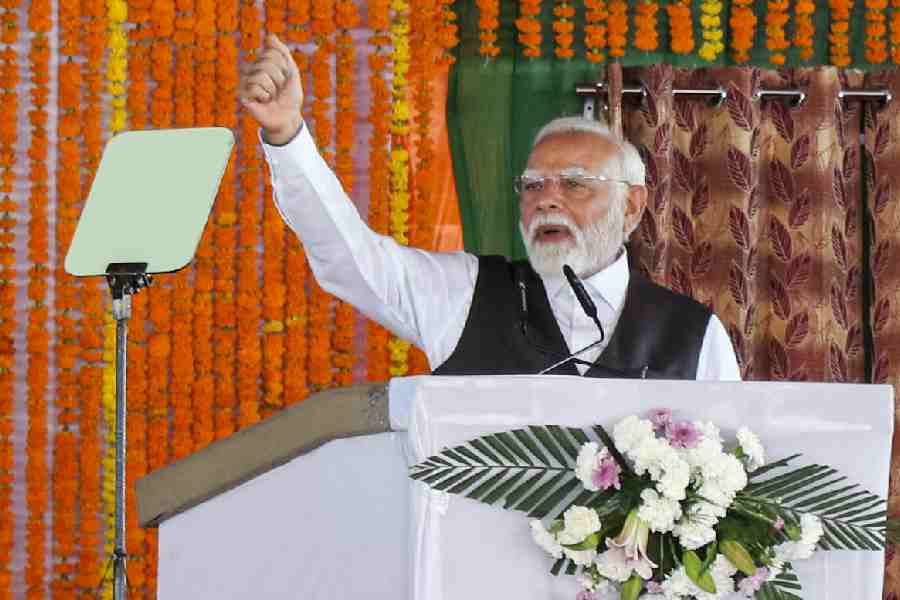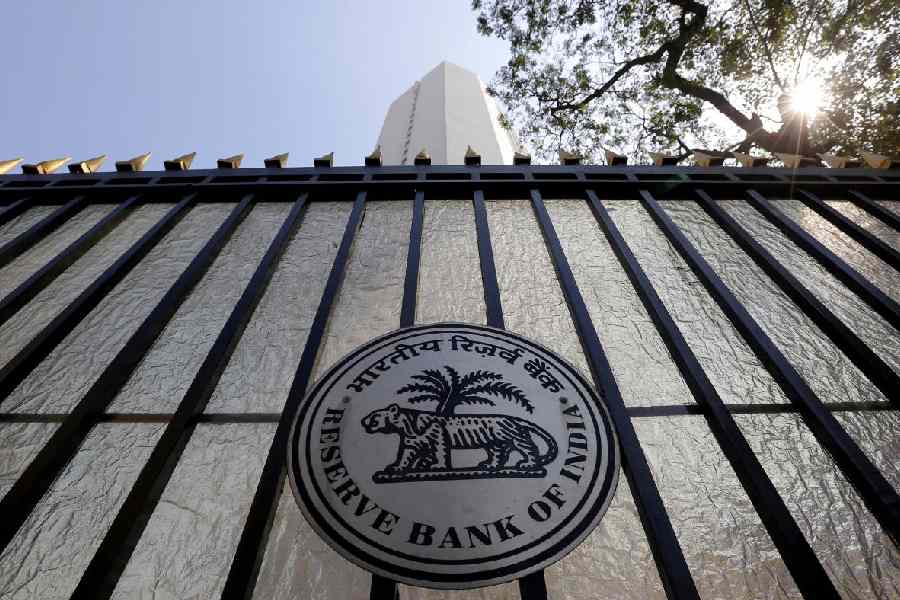
Ranchi, May 9: The terracotta temples of Maluti in Dumka are slowly and steadily walking the revival talk.
If officials involved in the much-touted conservation project are to be believed, five out of the 62 extant shrines have already been restored to their erstwhile glory while work on two others is expected to be completed in the next couple of weeks.
Prime Minister Narendra Modi had formally launched the project in October last year during his visit to Dumka and groundwork began in the first week of November.
According to the MoU signed between the state government and Indian Trust for Rural Heritage and Development (ITRHD) last year, the agency has to finish conservation work of the famed terracotta temples within four years from the date of commencement.
Jharkhand in-charge of ITRHD S.D. Singh said that despite several odds, the project was on target. "Initially, we have taken up a cluster of 20 temples in Rajor Bari, Maluti. Five are ready and two others are on the verge of completion. By the end of this month, they will be ready," he maintained.
The agency has also started landscaping work around the seven temples.
"These shrines are already witnessing unscheduled tourist visits. A few days ago, a group on its way to Tarapeeth was excited to see the temples restored. Since the approach road from Dumka's Rampurhat to Maluti has come up, people are now driving in briefly to catch a glimpse of the famous shrines. Earlier, poor road condition was a key deterrent," Singh explained.
The heritage trust is also in the process of sending a fresh proposal to the Archaeological Survey of India (ASI) for restoration of another 14 temples, seeking technical sanction to maintain the current pace of work.
Talking about challenges being faced in implementation of the ambitious project, Singh said: "When we began working on the ground, we realised that these temples didn't have any foundation - hardly, one to one-and-a-half metres under the ground - and still, they weathered so many years. So, digging was the first challenge. As we dug deeper to strengthen the foundation of the temples, we discovered seepage was another problem. Besides, weeds and roots of fully grown trees had made their way inside. So, cleaning them was the next dare."
If these challenges were bravely met, full credit goes to the agency's conservation artisans and experts who are working tirelessly despite the severe heat in Dumka, where temperatures have been hovering above the 40-degree mark for a month or so.
Singh maintained that work on the remaining temples would be completed sooner than before. "We have been acclimatised to local conditions and have a decent idea of the temple architecture here. So, execution will be fairly easy compared to the time when we began."
The ITHRD boss has been regularly providing updates on the progress of the project on his Facebook account, drawing suggestions from people.
In response to a post by Singh on April 26, former ASI employee Indrajeet Singh wrote: "White paint on these temples is too loud... too much brilliance for terracotta structures. If lime-mortar plaster is to be done, it must be minimal. If white assumes prominence, the temples will lose their aesthetic appeal."
The ITHRD, in its response, has extended an invite to Indrajeet Singh to visit Maluti in person, supervise work and offer further guidance.











